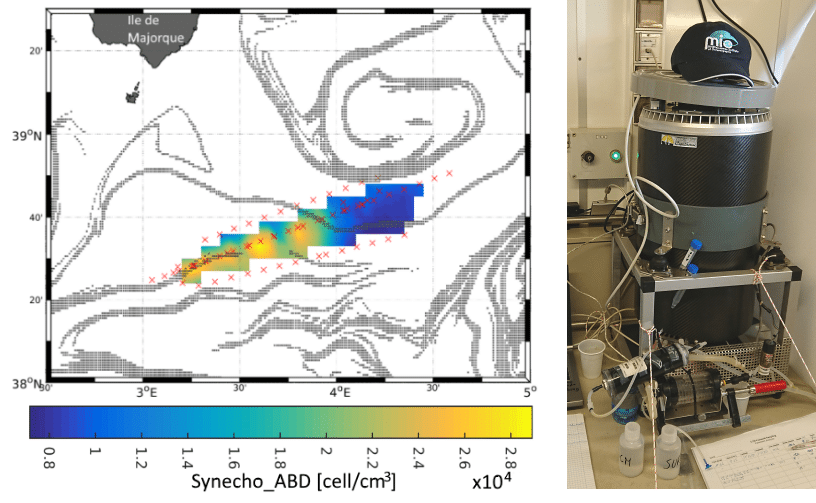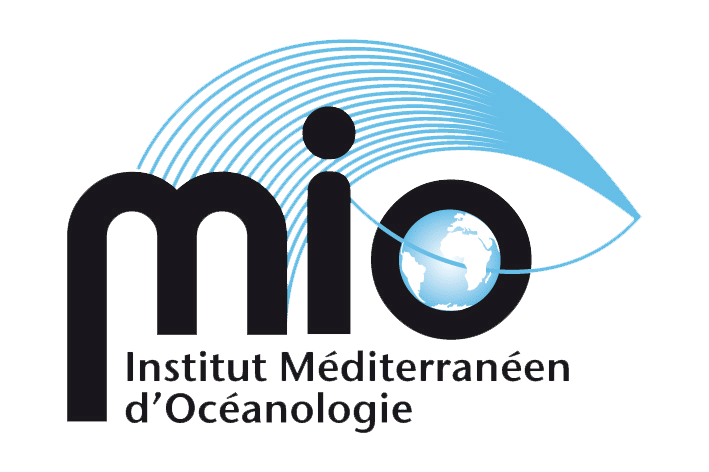BIOSWOT - Using satellites to study plankton
As part of the BioSWOT project supported by CNES (PI F. d'Ovidio, LOCEAN), the Institut Méditerranéen d'Océanologie (MIO) has developed a collaboration with the SHOM (French Navy Hydrographic and Oceanographic Service).
A.Doglioli and G.Grégori boarded the BHO Beautemps Beaupré for the PROTEVS campaign.1-SWOT2 (PI F.Dumas) in the western Mediterranean Sea, south of the Balearic Islands, from 28 April to 16 May 2018. In close interaction with a shore team (A.Petrenko, S.Barrillon, L.Rousselet, M.Thyssen) and in contact with colleagues at IMEDEA and the SOCIB (PI A.Pascual and J.Allen) aboard the r.v. "Garcia del Cid", MIO researchers studied the role played by ocean currents in the structure and dynamics of the phytoplankton community.
These micro-organisms play a major role as they form the basis of the food web, play a part in the cycle of biogenic elements and supply the ocean with dissolved O2 through the primary production process.
A Cytosense automated flow cytometer (Cytobuoy) was implemented on board, on the seawater circuit of the ship's thermosalinograph (TSG), in order to study phytoplankton cells on an individual scale and at high frequency (every half hour). The sampling strategy was controlled by detailed analysis of satellite data in near-real time.
Le project website and the NASA
See also FUMSECK, a BIOSWOT project campaign
- PROTEVS: ocean forecasting, turbidity, flow, waves and sedimentology
- SWOT: surface water and ocean topography

Map of FSLE filaments (grey, left) calculated from real-time satellite data (NRT) of CMEMS sea surface heights (accessible from the ODATIS catalogue) on 09 May 2018, superimposed on the sampling stations (red crosses) along the Beautemps-Beaupré's trajectory, and on the density of micro-organisms (coloured pixels) calculated on board using the flow cytometer (measuring device in the photo on the right). FSLEs can be used to monitor the state of dispersion of particles in the water over time. The filament structures here represent barriers created by currents that the particles cannot cross. Credits MIO/LOCEAN.




